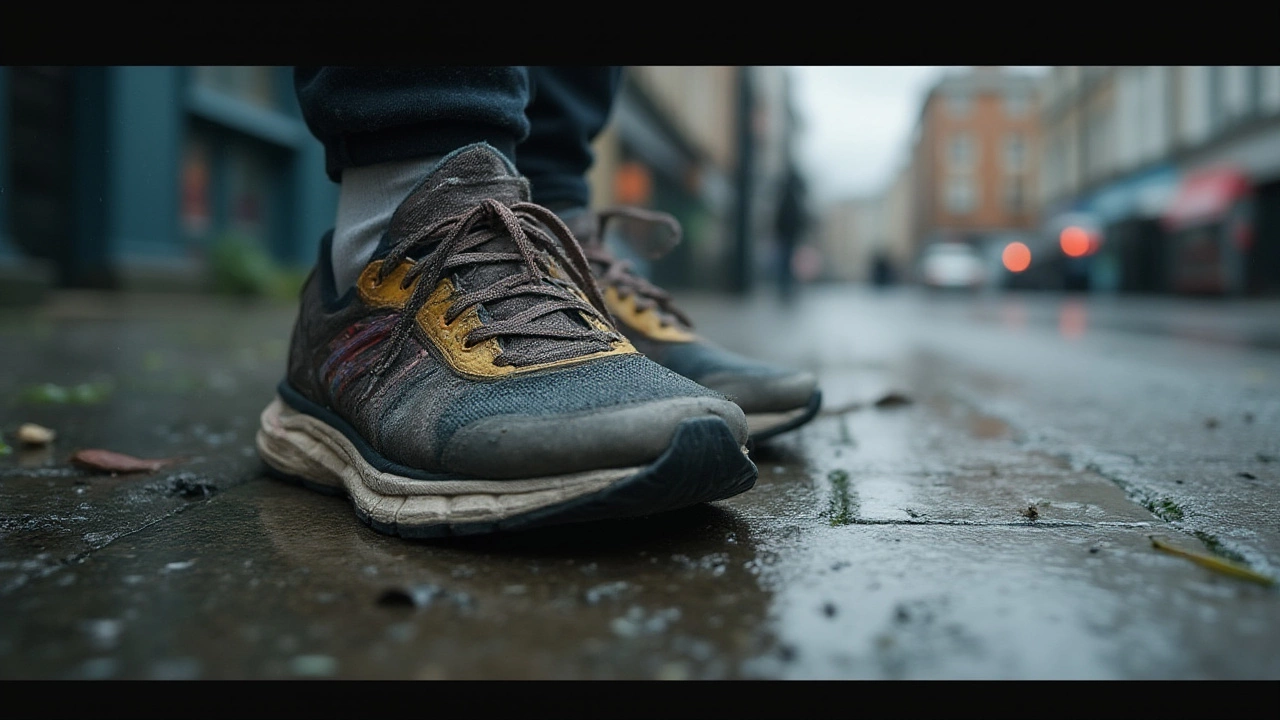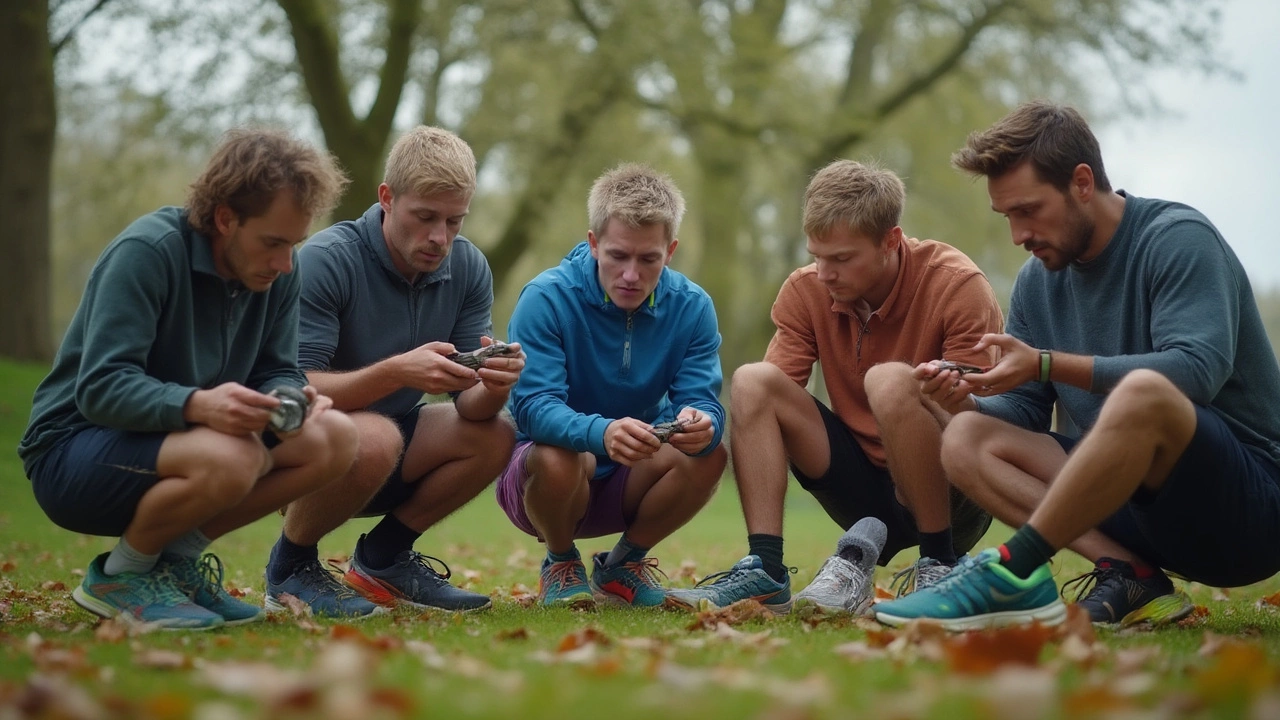Is It Bad to Walk in Worn Out Running Shoes? What Science Says

Last week, I saw a guy walking his dog in trainers that looked like they’d survived a marathon and then a zombie apocalypse. It got me thinking—how bad is it, really, to walk in old running shoes? Plenty of us have a favourite pair that’s gone all floppy or has mysterious holes, but do they actually matter if you’re just strolling to the shops or grabbing a coffee?
Let’s get real for a second: most people hate tossing out a pair of shoes just because they “look” beat up, especially if they’re still mostly holding together. But here’s where it gets interesting. The debate isn’t just about looks or even a rubber sole hanging on for dear life. It’s about what your old trainers might be quietly doing to your feet, knees, and back, even if you’re not breaking a sweat.
The modern running shoe is a miraculous thing. There’s actual science behind that spongy midsole, the grip, and the arch support. Once all that wears down, though, your whole body can feel it—even if you’re just walking at a lazy pace. So, what’s the real risk, and when should you finally ditch that battered pair in your hallway?
Why Running Shoes Don’t Last Forever
Running shoes aren’t built for eternity, and that’s not just a clever way to keep you spending more money. There’s real engineering in those squishy soles, which are designed to cushion your every step by absorbing the shock, protecting your joints from repetitive forces. But, like jeans or bras, they have a lifespan. Most big athletic brands, from Nike to Asics to Brooks, estimate a shoe’s life at around 500-800km (or 300-500 miles).
Let’s break that down. If you run or walk 5km a day, those shoes could be clocking out in less than five months. Of course, everyone’s stride, weight, and walking surface are different, so the mileage isn’t a hard rule. Some scientists at the University of Calgary found that the cushioning in most running shoes degrades by up to 60% after 500 km of use. The midsole—what takes the brunt of the impact—stops bouncing back and basically goes flat.
Even if the outer sole still has decent grip and the top isn’t in shreds, that’s the bit you can’t see. The structure that held your feet in place and stopped your knees from grumbling gradually vanishes. Most people won’t notice this happening. Your body just starts working a bit harder, and over time, that can mean more aches or even small injuries—plantar fasciitis, shin splints, lower back niggles, and so on.
If you’re only going for a gentle walk to the corner shop or around Bristol’s harbourside, worn running shoes might not ruin you right away. But do it enough, especially on hard pavement, and the lost support will catch up with you.
Weather matters, too. Wet, cold UK winters can mean your shoes break down even faster (a soggy trainer doesn’t last long). So, if you’re trudging through puddles or constantly dodging rain showers, that “old reliable” pair is probably getting hammered much sooner.
Does Walking in Old Running Shoes Harm You?
Okay, so how risky is it, really? Well, medical experts from the British College of Podiatry aren’t shy about saying old running shoes cause problems, even at walking pace. The issue comes down to three things: loss of cushioning, a worn-out outsole, and collapsing arch support. Each of these can cause foot fatigue, pain, and even knock-on issues higher up the leg.
Here’s something clever: your feet are shock absorbers. When shoe cushioning fails, your body starts compensating in weird ways—rolling in at the ankle, shortening your stride, or tensing the calf. That may explain those days when an innocent stroll leaves your legs feeling like you’ve run a half marathon. There’s data supporting this, too. A 2022 study in the Journal of Foot and Ankle Research found people using worn trainers (with 70% less cushioning) had almost double the rate of reported joint pain, even at walking speeds.
Now, everyone’s feet and gait are different. If you’re light, have strong leg muscles, or stick to soft grass rather than concrete, you might get away with old shoes for much longer. But for most of us—especially over 40, plus-size walkers, or those with flat feet—the risk starts creeping up fast. Extra pressure on one part of your foot? That’s plantar fasciitis calling. Floppy shoe letting your ankle wobble more? Say hello to Achilles issues. Even blisters show up more, because the fabric sags and rubs in new places.
And let’s not forget those tread patterns. The outsole (that rubbery bit on the bottom) is your main grip on wet or icy pavement. Once the grooves wear down, you’re on banana peel territory—slipping becomes a real risk, especially if you’re late for the bus or hurrying home. This isn’t just scaremongering; Bristol hospitals see plenty of twisted ankles and stubbed toes after a careless dash in worn shoes.
You might think these problems are just for runners. But podiatrists say brisk walkers rack up similar weekly mileage to casual joggers. If you walk an hour a day, it adds up—and so does the impact on your shoes.

How to Tell If Your Shoes Are Past Their Prime
Sometimes, old running shoes are so obvious they practically walk themselves to the bin. But it’s not always that clear. The trick is knowing what signs matter. If your shoes have a mysterious new squeak, a lopsided feel, or you spot odd aches popping up, it’s time to do a health check.
- Bend Test: Hold your shoe, and try to bend the toe towards the heel. If it folds like an old pancake instead of offering resistance, that’s a bad sign. The internal shank (stiffener) is gone.
- Press the Midsole: Poke the foam at the side of the sole. Does it spring back, or feel hard and dead? If your finger leaves a dent, there’s no bounce left—goodbye, shock absorption.
- Look Inside: Is the heel cup sagging or bulging? The fabric inside the heel area might wear out before the sole, giving you blisters even on short walks.
- Check the Outsole: Turn the shoes over and compare the worn patches against a new pair (or the other shoe). Bald spots, deep worn areas, or a lopsided shape all mean you’re tilting or sliding as you walk.
- Listen to Your Body: If your knees or heels start to ache after walks that used to be pain-free, your shoes may be the reason.
Here’s a handy table for common shoe problems and what they mean:
| Sign | What It Means | Should I Replace? |
|---|---|---|
| Midsole feels flat | No shock absorption | Yes, ASAP |
| Outsole bald | Poor grip, risk of slipping | Yes |
| Fabric holes | Less support, more blisters | Maybe soon |
| New aches & pains | Poor support from shoes | Likely, try new shoes |
Most folks ignore these signs until pain shows up. But swapping out shoes at the first sign of trouble is much cheaper than physio or podiatrist appointments later, trust me.
Tips for Making Old Running Shoes Go the Distance (Safely)
So, what if you just can’t part with your old favourites yet? Maybe they’re broken in perfectly or fit your feet like slippers. There are ways to squeeze some extra, low-risk life out of them for non-active use.
- Use Them for Light Errands: If you’re just wandering to the corner shop or chilling at home, they might be fine. Keep a better pair for real exercise or long walks.
- Rotate Your Shoes: Studies (like one from Luxembourg University) show that swapping between two pairs lets each recover and last longer. Sweat and pressure need time off!
- Keep Them Dry & Clean: Moisture rots both the insole and midsole. If your shoes get soaked in a UK downpour, dry them well before reusing (stuff with newspaper—works a charm).
- Add New Insoles: Sometimes, a cheap pair of insoles can extend comfy wear for a few weeks. Just don’t expect miracles on worn tread or torn uppers.
- Downgrade, Don’t Dump: Retire your oldest pair for housework or gardening. Never use them for running or longer walks if support has gone.
If you need to buy new shoes, here’s a solid tip: don’t just grab the same model or size. Our feet often change shape by our 30s or after a lot of use. It’s worth getting measured, or even checking for special offers at local running shops in Bristol—lots of them offer free gait analysis if you ask.
A little organization goes a long way, too. Try tracking shoe mileage the way runners do. Write the date you started wearing a pair inside the tongue with a Sharpie, or keep a rough tally in your phone. It’s surprising how quickly those steps add up—your “barely worn” shoes might be ready for retirement before you know it.
Bottom line? Walking in old running shoes isn’t the worst crime in fitness, but it’s not as harmless as you might hope, especially if you clock up plenty of urban miles. Listen to your body, check your shoes, and know when to put sentimentality aside. Your joints will thank you—and hey, you’ve got an excuse to shop for some new trainers that actually look fresh.
